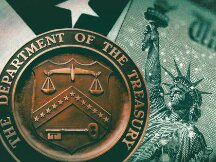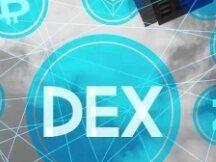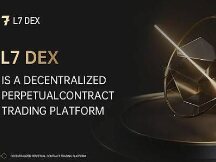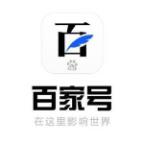How will DeFi change in 2022 and beyond?
Most of the DeFi 2.0 protocols we tested are social and algorithmic rules to formalize the distribution of capital. The differences between these agreements are guarantees, liquidity, incentives, governance tokens and stability coins.
According to Scoopy Troples, DeFi 2.0 has three components.
Improving the efficiency of investments in DeFi contract: $ TOKE provides loans to manufacturers and suppliers to ensure income inequality, then create / increase the business and income from the spread.
Cost / liquidity management: $ OHM is the leader in this field. Not only do they have a mining job, but they sell OHM to support the currency and buy all of the LP stocks at the $ OHMDAI and $ OHMLUSD prices.
Maximum revenue management for DeFi contracts: Plans receive and distribute funds to DeFi to increase revenue and revenue.
What is DeFi 2.0?
Simply put, DeFi is an ecosystem where you can leverage multiple financial resources from a public distribution blockchain network. DeFi makes this product open to anyone and any user without having to go through financial interventions such as brokers and banks.
As Sam Kazemian explains: The DeFi 2.0 protocol effectively maintains balance sheet assets and distributes coins, income, promotions, and stable assets through token owners. DeFi 2.0 aims to create a platform where insurers are not only voters, but also those who onboard, process and support product development and contract distribution.
Messari has created two key elements to take DeFi out of its comfort zone: LaaS and the contract.
Finally
Liquidity as a Service (LaaS) providers help find contractual solutions for mining applications. Cash is not attractive in DeFi as it is a fixed price on a contract basis. This is good for LaaS providers as there are many contracts that help them buy business income and lease at low cost and profitably.
"Secondary" contract
These agreements attempt to implement, extend or modify existing DeFi standards. The second method uses the advantages of a combination of DeFi. These contracts are also designed to build on the existing DeFi infrastructure to upgrade, automate or extend existing processes or models.
DeFi 2.0 protocol

Most of the DeFi 2.0 protocol that we have in the ecosystem is currently testing social and algorithmic rules to formalize the distribution of capital. The differences between these agreements are guarantees, liquidity, incentives, governance tokens and stability coins.
Olympus / Olympus Pro
This contract uses Olympus DAO's contractual mechanism to provide the operator with the income from its own contract. The plans can exchange tokens for assets or LP tokens of any kind at a reduced price. This process is a significant improvement over the traditional liquid extraction process that a project must maintain to ensure mobility.
Olympus Pro makes it possible to buy contracts on a permanent basis, while meeting the new requirements for these tokens. The base token of the Olympus Pro contract has nothing to do with the $ OHM token. However, the project can be integrated with sOHM or OHM to reach the OlympusDAO ecosystem.
Planners have the ability to use their existing tokens and gain permanent benefits without worrying about losses. This is different from the current situation, where liquid extraction has a similar starting price but is not profitable.

kev
Tokemak was one of the first contract players to meet the service requirements. In Tokemak, a project can provide a token for a nuclear power plant and then combine it with an asset such as USDC or ETH.
Jobs that receive $ TOKE can send their earnings wherever they want. This is a much better start than the traditional liquids industry.
The main uses of the Token are:
Suppliers and revenues: each user can put an asset in the network for marketing.
DAO: DAOs can use Tokemak wastewater to upgrade and deliver water directly to operations, providing an alternative to existing commercial products.
New DeFi Projects: New companies can build their own low cost tokenized reactors and use the Tokemak protocol to manage their assets, creating a healthy project environment from scratch.
Developers: MMs can use network assets to generate income from multiple exchanges.
Exchanges: Exchanges can also use TOKE products to gain value to improve trade in depth.

payment protocol
Fei is a decentralized and scalable stability protocol called $ Fei, backed by chain reserves. The Fei Protocol is a huge MakerDAO CDP that has developed a way to distribute income. This process has been proven to be more profitable than an industry based on CDP.
Fei Protocol announced a partnership with OndoFinance to provide the expensive and short-lived LaaS option for DeFi. Thus, the contract does not require an initial investment, but faces a permanent decline. The Fei protocol charges a nominal fee during the liquidity period.

Jason Choi's DeFi forecast for 2022 and beyond
Jason Choi wrote about some of the prospects on the DeFi site on Twitter.

Here are a few:
The achievements of financial management have been established. CeDeFi offers the next $ 1 billion to $ 1,000 billion opportunity.
Most decentralized financial contracts are ultimately identical. Eventually, they will become a vertical crypto-bank.
Within 3 years, the total amount of DEX will exceed all VEX.
In five years, financial management upstream of self-regulation will represent 30 to 50% of total financial services.
Over the next three years, 50% of fraudulent consumers will have personal and credit scores.
The anonymous team will generate around 50% of the DeFi protocol with the highest market value over the next three years.
Over 20% of L2 use in three years comes from positive expectations. NFTs can outperform individual metacosms and individual blockchains.
Growth in the value of the most efficient NFTs over the next five years may exceed the total income of the NFT market.
Most DeFi users don't bother using L1 or L2 speeds.
One of the largest and most active venture capital firms over the next five years will be DAOs.
Over the next five years, we will see DAOs acquire and tokenize 2 good websites.

Scan QR code with WeChat































